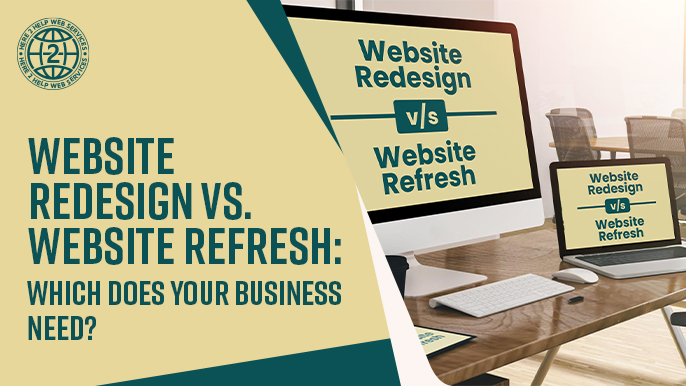The Importance of Naming Conventions for HubSpot Assets
Managing a growing number of assets in HubSpot can quickly become overwhelming. Whether you're handling marketing campaigns, sales workflows, or organizing your contact lists, a clear and consistent naming convention is crucial. Without it, you may find yourself spending unnecessary time searching for assets, struggling with inconsistencies, or even duplicating work.
In this post, we’ll explore why naming conventions are so important in HubSpot and how they can save time, improve organization, and help you scale your marketing and sales activities effectively.
Why Naming Conventions Matter
1. Clarity and Organization
A well-structured naming convention allows for quick identification of what an asset is, what it relates to, and its purpose. Whether it's a campaign, form, email, or workflow, the name provides immediate context, reducing time spent searching for specific assets.
By using consistent naming conventions, you can easily group and manage related assets. For example, all assets related to a particular campaign or project can be identified, even across different types like emails, forms, and workflows.
2. Scalability
As your business grows and you create more assets, a consistent naming convention makes it easier to scale your operations. You won’t have to rethink your organization strategy each time a new asset is created, and you can avoid the confusion that comes with inconsistent or random naming.
A clear naming convention also allows different team members, whether in marketing, sales, or operations, to collaborate more effectively. Everyone can follow the same structure, making it easier to find, use, and update assets as needed.
3. Efficiency and Time-Saving
When assets are consistently named, team members can quickly navigate HubSpot to locate the correct forms, workflows, lists, or campaigns. This reduces the time spent searching for assets or trying to understand what something is for.
Naming conventions also streamline reporting and analysis. When assets are clearly named, you can generate accurate reports without worrying about mistakenly including irrelevant assets.
4. Consistency Across Campaigns
Consistent naming ensures that your brand and processes are represented uniformly across all campaigns and customer touchpoints. This includes everything from email subject lines to the workflows that drive automation, ensuring that nothing falls through the cracks due to miscommunication.
A naming convention also helps prevent the accidental creation of duplicate or conflicting assets. By following a consistent structure, you can quickly spot whether an asset already exists or if a new one is needed.
5. Improved Auditing and Cleanup
When conducting audits, such as reviewing contact lists, workflows, or email campaigns, a naming convention makes it easier to identify which assets belong together and how they are being used. This can be critical when you need to ensure that your marketing and sales processes are functioning as intended.
With clear naming conventions, you can easily identify outdated or redundant assets and maintain a clean, organized system. This simplifies ongoing maintenance and ensures that your database stays healthy and relevant.
6. Automation and Workflow Management
In workflows, naming conventions help ensure that automations are correctly set up and executed. If workflows and lists are clearly named, it's easier to manage the enrollment criteria and actions, reducing the risk of errors.
For automations that require linking forms, emails, and lists, naming conventions make it simpler to connect the right assets without mistakes, keeping the customer journey smooth and uninterrupted.

Real-Life Example: How Naming Conventions Improved Efficiency
To illustrate the impact of naming conventions, let's look at a real-life example. Company X needed help managing its growing number of assets in HubSpot. Their team often spent excessive time searching for the correct workflows, emails, and forms, leading to inefficiencies and errors. In addition, they were duplicating assets because they could not identify if something was already created.
After implementing a consistent naming convention across all their HubSpot assets, Company X saw a 50% reduction in the time spent searching for assets and recreation of existing assets. This improved overall productivity and ensured that their marketing and sales teams were aligned and organized.
Common Pitfalls to Avoid
While implementing naming conventions, there are some common mistakes to watch out for:
Inconsistency Across Teams: When different teams use different naming structures, it creates confusion and inefficiency. Ensure that everyone follows the same guidelines.
Overly Complex Names: Naming conventions should be simple yet informative. Avoid overly long or complex names that are difficult to read and understand.
Lack of Maintenance: Once naming conventions are in place, they need to be maintained. Regularly review your assets to ensure they still adhere to the naming structure and update them as necessary.
How to Get Started with Naming Conventions
Implementing naming conventions in HubSpot can be done in a few steps:
Identify Key Asset Types: Start by categorizing your assets (e.g., campaigns, forms, emails, workflows) and determining the key elements that should be included in each name. A good naming convention should be simple, clear, and scalable, allowing you to easily identify and group related assets.
Example Naming Convention:
- Campaign name: CM | Foundational Funnel
- Form name: FM | Foundational Funnel
- Workflow name: WF | Foundational Funnel
- List: LS | Foundational Funnel
- Landing Page: LP | Foundational Funnel
- Marketing Emails:
- ME | Foundational Funnel – Outreach 2
- ME | Foundational Funnel – Outreach 1
- Sequence: SQ | Foundational Funnel
- Sequence Emails:
- SQE | Foundational Funnel – Email 1
- SQE | Foundational Funnel – Email 2 Follow Up
Explanation of Naming Convention Example:
Asset Type Prefix: Each asset starts with a prefix that indicates its type, such as CM for Campaign, FM for Form, WF for Workflow, and so on. This ensures that even with similar names, assets can be quickly identified by their function.
Campaign Name: The middle section of the name remains consistent across related assets, such as "Foundational Funnel." This ties everything together and makes it easy to find all the components of a campaign.
Specific Detail: The final part of the name provides further detail, such as the stage or purpose of the asset (e.g., Outreach 1, Email 2 Follow Up). This helps distinguish between different elements within the same campaign.
This naming structure helps keep all related assets organized, making it easier to manage and track campaigns as they scale.
Involve Your Team: Naming conventions should be consistent across your entire organization, so involve your team in the process. This ensures buy-in and helps identify any potential issues early on.
Test and Refine: Once you've established your naming conventions, test them out to see if they work in practice. Are they easy to follow? Do they help streamline your processes? If not, refine them until they do.
Document the Guidelines: Create a simple document outlining the naming conventions and share it with your team. This will serve as a reference point for future asset creation and ensure consistency.
Adopting a clear and consistent naming convention in HubSpot is essential for maintaining organization, improving efficiency, and supporting the growth of your marketing and sales efforts. It helps prevent errors, simplifies auditing, and ensures that all team members are on the same page.
Start by auditing your current assets, and if you don’t have a naming convention in place, now is the time to implement one. Your future self—and your team—will thank you for it.
Ready to optimize your HubSpot account with effective naming conventions and better organization? Contact me today for personalized guidance and support in streamlining your marketing and sales activities. Together, we can ensure that your HubSpot setup works efficiently for your business, helping you save time and focus on growth.



.jpg)


